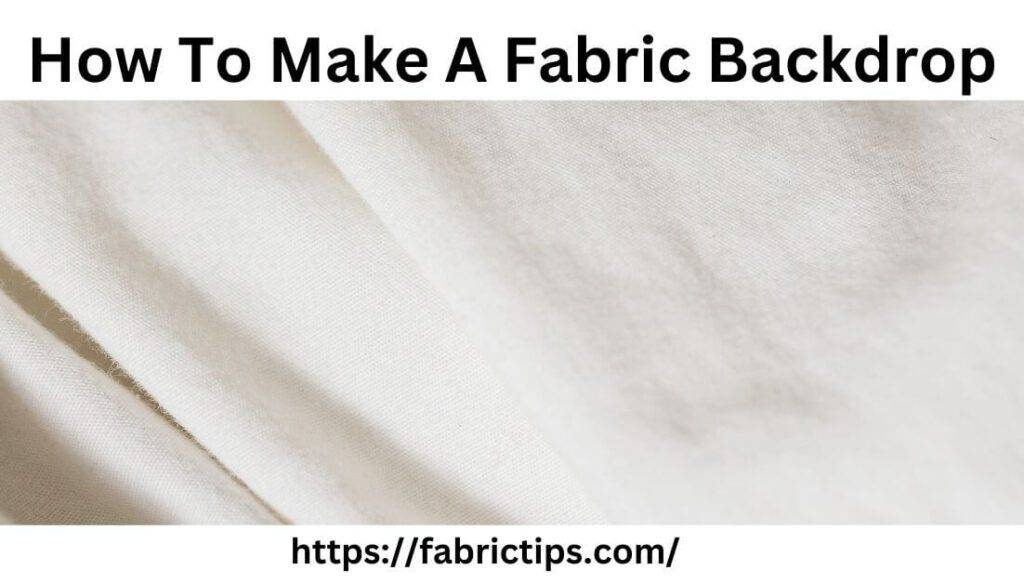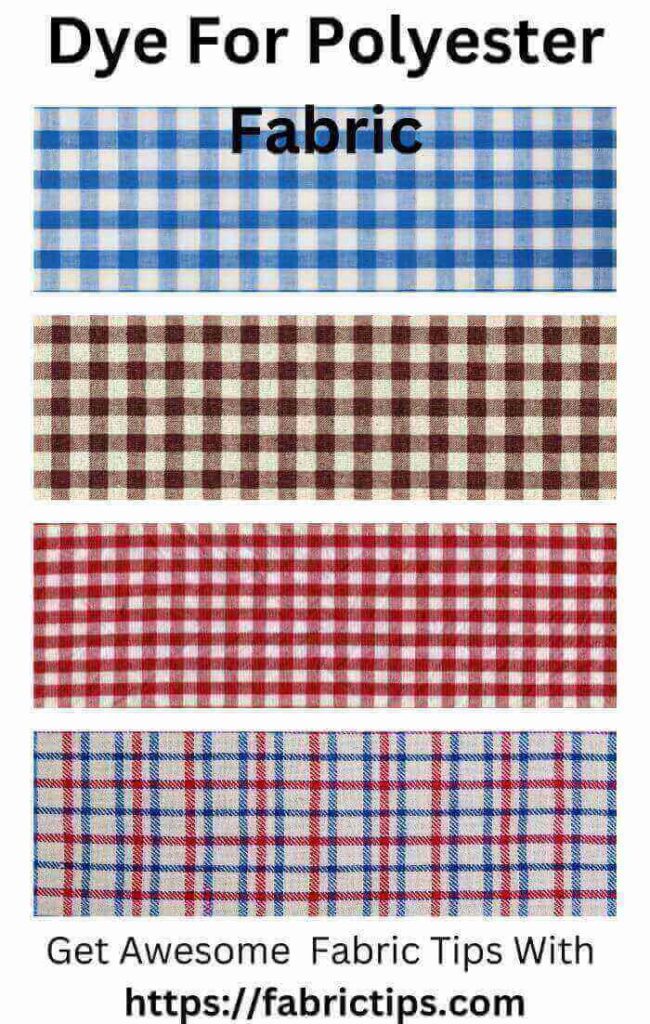Last Updated on December 13, 2025 by Wahid
Fabric backdrops are a lot of fun to make. However, creating a visually appealing backstage area, I realized it was a lot of work. However, when I began researching how to make a fabric backdrop, I discovered it is actually very easy to do.
Choosing the right colors and measuring the fabric precisely are also important for designing a backdrop out of fabric. In my opinion, pink & blue are the best color combination for a stage, and they can dramatically enhance its beauty. Plus, what’s more? The construction of a backdrop requires a lot of safety precautions. When using sharp objects like rotary cutters, make sure you learn how to use them first.
In today’s tutorial, I’ll show you how to create a fabric backdrop quickly and easily. Actually, it’s easy to do if you have a few things, such as a rotary cutter and a marker. Well, let’s see the overall step by step guide below.
Tool & Material Requirements
Just before you get started on your fabric backdrop project, make sure you make an inventory list of what you have to buy. The following tools are essential if you’re trying to make a fabric backdrop the right way.
- Fabric Cutting Scissors or a Rotary Cutter
- Cutting Table
- Cutting Mat
- Staplers
- Measuring Tape
- Parachute Flimsy Cord
- Marker
An Easy Step-By-Step Guide To Making Fabric Backdrops
I have listed every necessary tool above. Have you gathered them all? Once you’ve answered yes, you can move on to the next step. I’ll show you how to make a fabric backdrop the easy way. Now let’s begin:
Step-1: “Choosing Fabric Colors & Measuring”
- As a general rule, an average-size backdrop will stand approximately 50 inches long, allowing roughly 68 – 70 inches of width for the buffet area. However, fabric backdrops do not need to be a particular size.
- There’s nothing better than a fabric backdrop. Your choice of size & height is unlimited. Therefore, according to the calculation, to begin, you will need around 1.5 yards for each fabric.
- Right now, there are multiple colors available. As an alternative, you can go back to the traditional one, usually 2-color checks; usually pinks & blues. For example, if you would like eight colors altogether, approximately 12 meters (yards) of material are required.
- Yet again, you can choose the color based on your preference. Nevertheless, my view is – no matter what the occasion, blue and pink will look great.
Experts Note
When purchasing fabrics, look for stores that have discounts or coupons. Why? It is because you are about to make a big purchase from them and you can save money.
Step-2: “Cut The Fabric”
- Just to remind you, you can choose the size that you like. However, I would like to refer to the height & width that were mentioned previously. It’s totally up to your decision. You can either follow this measurement or calculate it yourself.
- After that, lay the fabric out on the cutting mat and on the table and then fold it into half hamburger shapes. By doing so, you’ll begin to start the cutting process easier. Next, fold the longest part in the same way.
- Then, divide each piece into sections measuring around 4.0 in. long. Following that, draw a temporary mark on the section and use a rotary cutter to cut the section.
- When it comes to rotary cutters, it is highly recommended to purchase at least one. Be sure to maintain safety, if not, you may be injured by the cutters.
- Well, the cutter can complete the cutting operation in a short amount of time, which is how fast it works. No matter how slow you go, you won’t be capable to effectively cut the clothes for longer than 15 minutes. Additionally, if you use the cutter safely, it is perfectly safe to use.
Experts Note
When you are unfamiliar with handling sharp tools like cutters, you shouldn’t start cutting immediately. Make sure you know how to use it, otherwise you may cut yourself rather than actually cutting what you want.
Step-3: “Secure The Parachute Line”
- Following the completion of all the fabric cutting, begin by tying a parachute cord into an easy knot.
- You don’t need to fuss with tying, since the initial step just involves tying your boots up.
- Now, fluff the fabric after you tie the knot by pulling it toward the outside.
- As a result, once you have confirmed that the stitch will keep the fabric in place, your next step is to begin sewing.
Step-4: “Applying The Stapler”
- A stapler with an air strike mechanism is perfect for hanging fabric, however, it can be difficult to properly set up.
- However, there’s no reason to worry if you do not have a stapler because nails will work just as well.
- You shouldn’t use the tape since it might not be sufficient to support the fabric backdrop’s weight.
- That’s especially true if you create the size that I’m talking about. When it comes to smaller ones, you might need to apply tape.
Step-5: “Adjusting The Overlaps”
- As of now, your gorgeous fabric backdrop is almost prepared to be used as a decorative element.
- If you want to adjust the fabric, take your time to position it correctly. The fabric should be layered over each other in order to avoid a clumsy & disorganized appearance.
- Here’s your last chance to let your idealistic mind shine through in order to create a lavish and attractive backdrop. Having completed the task, you are finished.
- There you have it. When you follow each and the entire step above, you can definitely make a stunning fabric backdrop. That was so simple, wasn’t it?
Taking Safety Precautions
There’s no chemical lab here, so you won’t need safety equipment. However, you cannot avoid getting minor injuries when setting up a backdrop because you’ll encounter sharp objects. Hence, please check out everything I have written below:
- Wear thin gloves when cutting fabrics, particularly if you are uncomfortable handling sharp edges.
- Be careful not to put your hands inside the fabric, otherwise, your fingers may get cut.
- You should complete the entire task as gently as possible to ensure your safety.
FAQs
01. Can I use any fabric as a backdrop?
Muslin or Canvas backdrops are popular because of their versatility and portability. Backgrounds made of canvas tend to be heavier and bulkier than backgrounds made of muslin, however, they can offer excellent depth & color.
02. How do you make a simple backdrop?
You can tape a sheet or fabric piece to make a simple, large backdrop. Make it pretty by choosing a sheet & curtain that has solid colors or fun patterns. Apply painter’s tape to the fabric and tape it up with the wall, drawing any wrinkles out carefully. Make sure it hangs to the ground.
03. How much fabric do I need to make a backdrop?
An easy backdrop can be made with: About “4 to 5 yards” or between “12 to 15 feet” of white or natural muslin. You should purchase the largest width possible. Ideally, you should find one with a minimum size of 108 inches.
04. What makes a good backdrop?
Ideally, you want the background to be as clutter-free as possible, allowing viewers to concentrate on the subject at hand. Don’t choose a background with too many patterns or colors. In addition to keeping things clean, they also create a visual contrast between your object and the surrounding environment.
05. How do you attach a fabric backdrop to the wall?
As an alternative to grommets, hang the backdrop like a towel over the rod. In the case of lightweight backdrops with grommets, you may prefer to hang them via removable wall hooks instead of using rods. The backdrop can then be hung via the grommet holes created by the hooks.
06. What colors are best for backdrops?
In recent decades, photographers have relied heavily on 3 colors for backdrops: white, black, and gray. As a subtle color, gray tends to bring attention to the subject, a goal most often achieved in portraiture.
07. Is a vinyl or fabric backdrop better?
Typically, fabric backdrops are made from lightweight fabrics that can be hung using clamps & clips or on backdrop stands. In addition, they are wrinkle-resistant, which makes them an excellent choice for most events or shows. Compared to Fabric Backdrops, Vinyl Backdrops are thicker but more fragile compared to Fabric Backdrops.
08. Is PVC good for the backdrop?
PVC backdrops are ideal for both beginners and professionals. In contrast to cotton & paper backdrops, polyvinyl chloride (PVC) materials can withstand multiple photoshoots. In addition, the material can be cleaned easily.
The End
So, using the tools mentioned above & following the DIY instructions outlined above, it is easy to create a lovely fabric backdrop by yourself. On top of the write-up about how to make a fabric backdrop, I’ve included 3 special tips on how to keep yourself safe while cutting.
Don’t hesitate to share your expertise with your family and friends so that they can create a backdrop that everyone will enjoy.


